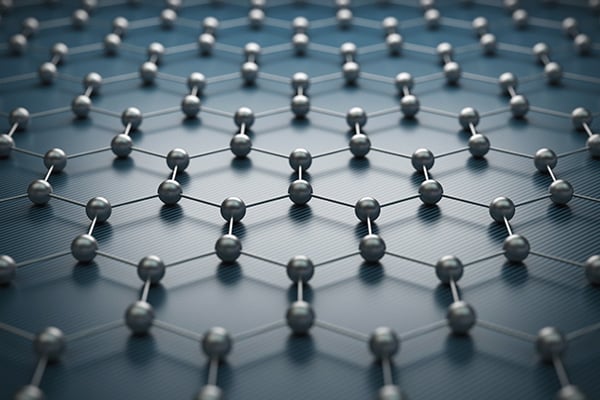 Carbenes are neutral molecules which contains a carbon atom with an electron valency of 6 (two bonds and two nonbonding electrons). They are a very reactive group of compounds, often too reactive to be observed. Because of this, they are usually used as highly reactive intermediates that cannot be isolated and are generated in the presence of a selected reactant.
Carbenes are neutral molecules which contains a carbon atom with an electron valency of 6 (two bonds and two nonbonding electrons). They are a very reactive group of compounds, often too reactive to be observed. Because of this, they are usually used as highly reactive intermediates that cannot be isolated and are generated in the presence of a selected reactant.
There are two forms of carbene, which are different, not only in their structure and electron distribution but also in reactivity.
- Triplet carbenes – have two unpaired electrons, one in an ‘sp2’ orbital, one in a ‘p’ orbital.
- Singlet carbenes – have a lone pair in a nonbonding ‘sp2’ orbital, and an empty ‘p’ orbital.
Carbenes can be used to effect chemical insertions into chemical bonds on a material surface, leading to a way or priming a surface and improving its adhesion. This is the basis of the Onto process from Oxford Advanced Surfaces (OAS); it utilises the carbene chemistry to chemically modify the surface of materials.
Due to the highly reactive nature of the carbene intermediates, the process does not etch or damage the surface of the material, but rather changes its the chemical properties by bonding a sub-micron layer to the surface. Unlike many chemical surface treatments which etch the surface or break up the surface of the material, carbenes carry out chemical insertions into chemical bonds on the material surface leading, there is no change in the bulk properties of the material.
A range of versatile and reliable chemical surface treatments is available from OAS which improve the adhesion of paints, lacquers, coatings and adhesives. Onto removes the need for abrasion, vapour blasting, plasma or other surface preparations; only degreasing is required. This removes limitations in material choice. Current Onto coatings are delivered as three-component systems which can be applied using standard spray systems or roller and brush. After application, the product is cured using a choice of potential methods (oven heating, hot air, infra-red and ultraviolet) depending on the grade and the requirements of the production environment.
Onto is applicable to many material forms, including composite materials and engineering plastics, both thermoplastic and thermoset. It can be used for the modification of sheets and films as well as fibres, fabrics and particles. OAS is currently researching how application of Onto can be applied to the modification of thermoplastic fibres/fabrics (such as Ultra High Molecular Weight Polyethylene) for use in thermoset matrix resins and the modification of fibres/fabrics for use with thermoplastic matrix materials. And chemical insertion reactions are possible even in classically “inert” chemical environments (Fig 1).
The fundamental research behind the Onto process was developed in the laboratory of Professor Mark Moloney in the Department of Chemistry at the University of Oxford during the 1990s through to 2006. At that point OAS was spun out in order to commercialise the technology. Since then, the technology has been further developed and optimised to allow it to move from application in the laboratory to commercial use in industrial manufacturing processes.
While the company is actively involved in both internal and government funded collaborative R&D programme, it also is actively seeking partners for co-development of commercial graphene applications.
In one such collaboration, OAS has joined with 2-DTech Limited, a subsidiary of Versarien plc. The aim is to develop a new range of products that incorporate nano-materials, such as graphene, into Onto to deliver enhanced mechanical performance and improved electrical and thermal conductivity. Graphene solvents and coatings are to be “chemically functionalised” to improve its chemical interaction and adhesion. The new products potentially allow both companies to address new materials challenges encountered in both our current and potentially new markets, according to OAS Chief Technology Officer Dr Jon-Paul Griffiths. Targets include the aviation, automotive, energy, defence and marine industries.
References
https://www.sciencedirect.com/topics/chemistry/carbene
https://www.oxfordsurfaces.com/
The views, opinions and technical analyses presented here are those of the author or advertiser, and are not necessarily those of ULProspector.com or UL Solutions. The appearance of this content in the UL Prospector Knowledge Center does not constitute an endorsement by UL Solutions or its affiliates.
All content is subject to copyright and may not be reproduced without prior authorization from UL Solutions or the content author.
The content has been made available for informational and educational purposes only. While the editors of this site may verify the accuracy of its content from time to time, we assume no responsibility for errors made by the author, editorial staff or any other contributor.
UL Solutions does not make any representations or warranties with respect to the accuracy, applicability, fitness or completeness of the content. UL Solutions does not warrant the performance, effectiveness or applicability of sites listed or linked to in any content.



Hi Andy,
This is fascinating chemistry. Can it be applied to make a polypropylene surface more amenable to coating? Is there a commercial product available?
Best Regards
Steve